Baroque grandeurOriginally a Jesuit church, this grand church has a very broad front with three arches on the front and two additional arches on the sides of the porch. Beautiful iron work provides gates for the entrance porch. |
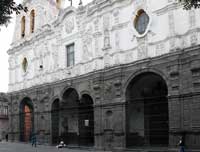
|

|
| |
|
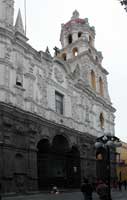
|
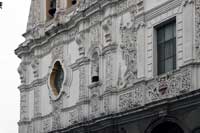
|
Extravagant relief sculptureThis church differs from many in Puebla in that it lacks the characteristic azulejos, or decorative and colorful tile work. Instead, it has a riot of Baroque and extravagant designs in relief sculpture--in wedding cake white in the upper registers and gray in the first register. |
| |
|
Jesuit symbols on the church front At the top, IHS with the cross drawn above the crossbeam of the letter H. After the approval of the Society of Jesus as a new religious order in the Church, the IHS became the main symbol of Jesuit identity. Directly above the three-lobed door, the bleeding heart of Jesus, a common Catholic symbol and often used by Jesuits in the title pages of books and on church facades. |
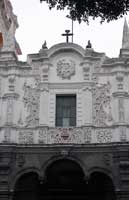
|
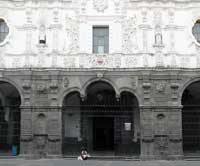
|
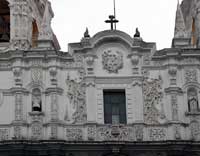
|
| |
|
Entrance portals and monumental carved doors |
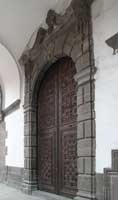
|
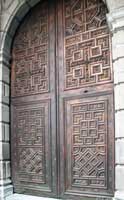
|
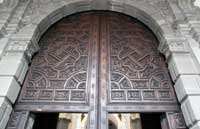
|
| |
|
Towers, completed a century later--A strange combination of elegant classicism and extravagant decoration |

|
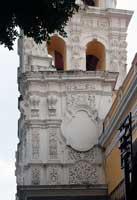
|
| |
|
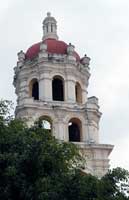
|
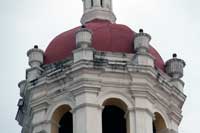
|
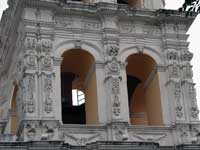
|
| |
|
Interior with nave columns in dark stoneWhile Venetian Renaissance churches sometimes use a dark stone (pietra serena), the effect here isn't serenity. Like the front which seems odd with its combination of dark lower register and white upper, the interior seems chaotic--too many colors, too many styles. |
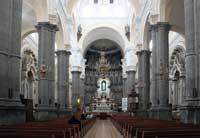
|
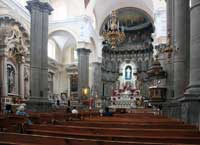
|
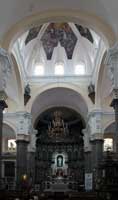
|
| |
|
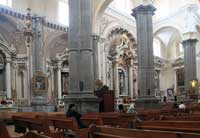
|
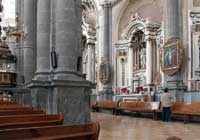
|
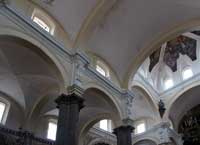
|
| |
|
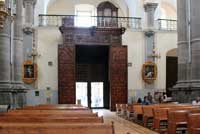
| View back toward the entrance |


 Go to the Mexico Index.
Go to the Mexico Index. Click here to return to index of art historical sites.
Click here to return to index of art historical sites.
 Click here to return to index of artists and architects.
Click here to return to index of artists and architects.
 Click here to return to chronological index.
Click here to return to chronological index.
 Click here to see the home page of Bluffton College.
Click here to see the home page of Bluffton College.

